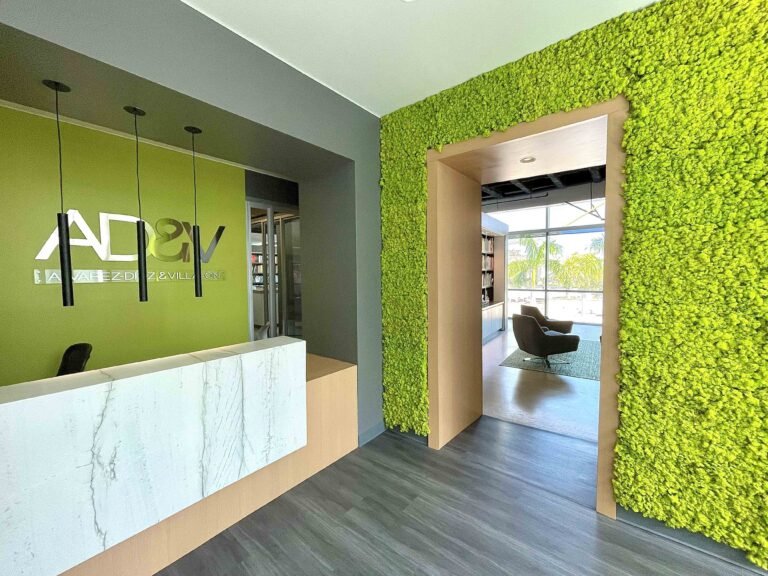5 Reasons Biophilic Design Improves Wellness
Written By AD&V®ABOUT THE AUTHOR | AD&V® is dedicated to advanced and energy-efficient sustainable architecture & interior design that enhances people’s experience of the world and improves their lives.
Biophilic design improves human wellness.
Biophilic design provides ways for humans to meet their need to connect to the natural environment through direct relationships with nature or natural materials. It incorporates nature into the built environment through natural forms, colors, textures and lighting.Some of the most popular biophilic design elements include living or green walls, rooftop and vertical gardens, indoor greenhouses, naturally lit glass panels, stone surfaces, green areas, as well as renewable energy sources, grey water systems and air purification systems.Biophilic design not only connects humans with nature, but it also enhances wellbeing through that connection. Here are five reasons biophilic design improves wellness:
1. REDUCES STRESS & ANXIETY
AD&V office terrace.
It has been proven that indoor green biophilic elements facilitate the recovery of physiological stress, while a space with an outdoor view of nature facilitates the recovery of anxiety. Scientific studies show that interacting with biophilic environments improves people’s blood pressure.Other studies have even found that hospital patients with rooms with a view to nature or even a photograph of natural elements, spend less time in the hospital because they recover more quickly. Interacting with natural environments can reduce stress and anxiety since humans have an innate preference for those environments.
2. PROMOTES PHYSICAL HEALTH & ACTIVITY
AD&V office moss wall.
Biophilic design provides simple and accessible solutions that promote physical health and physical activity. For example, biophilic design integrations such as indoor walking paths and open-air walkways encourage physical activity.Other integrations like air purification systems and active green walls that filter air, give people the ability to breathe clean air and improve their respiratory health.
3. ENCOURAGES SOCIAL INTERACTION
AD&V office architectural library.
Believe it or not, biophilic design actually encourages social interaction. According to a study, biophilic spaces can “generate even more healthy social interactions by encouraging their spontaneous occurrence.”When biophilic design is present, people can’t help but feel good in that space and share their positivity with others. This happens because positive interactions release serotonin in the brain, which in turn, improves mood.
4. ENHANCES PRODUCTIVITY
AD&V office main conference room.
Biophilic design promotes productivity and alertness. Design elements like natural lighting and active green walls constructed from plants or moss, bring the outdoors in, and improve performance on cognitive tasks.According to a report titled The Economics of Biophilia, providing access to natural daylight, outdoor views, and natural ventilation can reduce eyestrain, relieve mental fatigue, and retain people’s attention. This is because the more comfortable employees are in the office, the more productive they are.
5. BOOSTS ENERGY
AD&V office reception area.
Countless studies have found that spending time in nature improves wellness. For example, the presence of plants gives people an increased feeling of vitality, boosting their energy levels and mood.Similarly, lighting systems that simulate natural sunlight or actual natural sunlight, can help maintain one’s circadian rhythm and improve energy. The natural environments that biophilic design provides, help make people feel more alive and active.
MORE THAN DESIGN
As you can see, biophilic design improves our wellness in many different ways. Biophilic design elements such as nature views, natural lighting, and open and green spaces can help us stay active, reduce stress, socialize, be productive, and simply feel good all around. So, if you’re looking for ways to improve your or someone else’s wellbeing, applying biophilic design strategies to a space is a great way to do so. This is the power of biophilic design.






